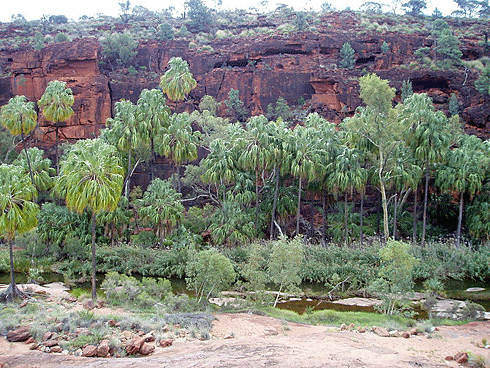
|
Published: 27 August 2012
When is a native not a native?
The discovery that an iconic Australian palm is actually an introduced species begs the questions: what is a native species and what implications does this have for species conservation and management?
In an article in Proceedings of the Royal Society B: Biological Sciences, plant biologists from CSIRO and The University of Western Australia say they have evidence to argue that current conservation policy is contradictory and inadequate.
Within the same article, PhD student Melinda Trudgen, Adjunct Associate Professor Bruce Webber and Adjunct Professor John Scott also explore new ways to assess species movements.
Growing evidence suggests that humans have contributed to the establishment of new populations of species over many millennia and across many regions. The authors suggest that the regions where populations are, or could be, native need to be better defined.
‘Native and non-native status provides an important premise for developing management strategies, but should not be used to automatically determine specific management goals,’ the authors write.
‘We need to move away from the simplistic arguments of “conserving natives” and “controlling aliens”.’
Management goals should take into account ecosystem impacts, ecological functionality and cultural heritage, among other factors.
The authors believe that the guidelines and policy currently used to determine and define native status need to change. While most approaches link non-native status to human movements or native status to presence before a given date, an arbitrary mix of both is applied in Australia.
For example, in the Northern Territory, plants or animals are considered native if they were moved by Indigenous people before 1788, but for all other people a date of 1400 is applied.
The authors caution that these concepts are becoming increasingly irrelevant and unworkable in a world of rapid global change.
Source: University of Western Australia




